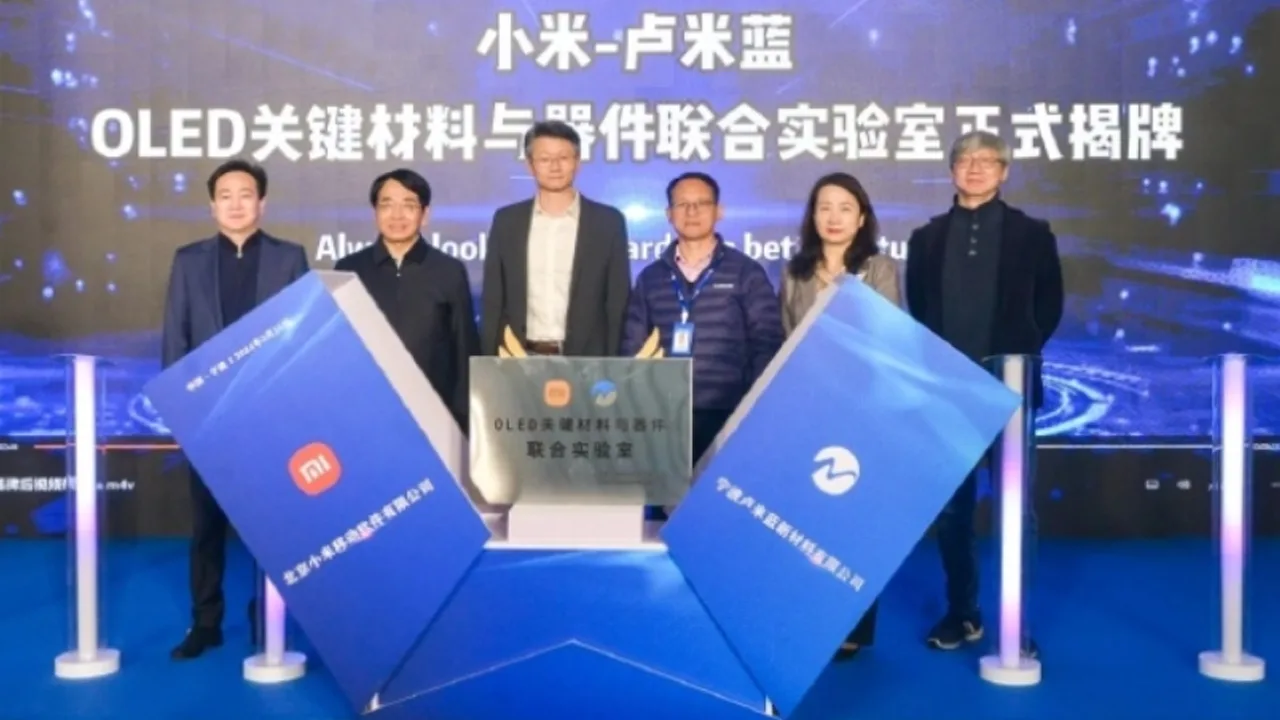Ever wonder what makes those stunning displays on your phone pop with vibrant colors and deep blacks? It’s all thanks to a technology called OLED (Organic Light-Emitting Diode). But even this amazing tech has room for improvement. That’s where Xiaomi, the tech giant behind your favorite smartphones, comes in. They’ve just joined forces with Lumilan, a leader in OLED materials, to push the boundaries of display technology. Get ready for even more dazzling visuals on your future gadgets!
Deep Dive into Display Materials: The Xiaomi-Lumilan Joint Lab
This isn’t your average “let’s slap our logos together” partnership. Xiaomi and Lumilan are setting up a dedicated research facility – the Xiaomi-Lumilan OLED Key Materials and Devices Joint Laboratory. Here, brilliant minds will collaborate to develop next-generation OLED materials. Think of it as a scientist playground focused on unlocking the full potential of OLED displays.
Why This Matters: Beyond Brightness, Breaking Barriers
Sure, current OLED displays are impressive. But there’s always space for improvement. This joint venture is about tackling the limitations of today’s technology. Imagine displays that are even brighter, consume less power, and boast even more lifelike color reproduction. That’s the future Xiaomi and Lumilan are striving for.
The Big Picture: Xiaomi’s Vision for Display Supremacy
This partnership isn’t just about creating a better display for your next phone. It’s part of Xiaomi’s ambitious plan to become a global leader in core technologies. As Wu Cangzhi, head of Xiaomi’s mobile phone display and touch department, puts it, they’re “investing heavily in underlying core technologies.” By focusing on the building blocks of display technology, they aim to set the standard for future generations of gadgets.
Lumilan Joins the Mission: A Shared Passion for Innovation
Lumilan, a powerhouse in the OLED materials industry, brings its expertise to the table. Their chairman emphasizes close collaboration with Xiaomi, stating their commitment to “overcome the existing technological bottlenecks in the OLED display industry.” Together, these tech titans form a formidable force for display innovation.
So, What Does This Mean for You?
As a tech-savvy user, you can expect to benefit from this groundbreaking partnership in several ways:
- Brighter and More Vivid Displays: Imagine a phone screen that rivals the brilliance of the sun (without actually burning your eyes, of course!).
- Enhanced Energy Efficiency: Longer battery life is a dream for everyone. This research could lead to displays that consume less power, letting you enjoy your phone for extended periods.
- Unmatched Color Accuracy: Get ready for visuals so lifelike, it’ll feel like you’re stepping into the screen itself.
The Future of Displays is Here
The Xiaomi-Lumilan joint venture marks a significant leap forward in display technology. With their combined expertise and unwavering dedication to innovation, we can expect to see groundbreaking advancements in the coming years. Buckle up, because the future of mobile displays is about to get seriously bright (and colorful)!
What are OLED Materials?
(This section provides a table for a better understanding)
| Material | Function |
|---|---|
| Emissive Layer | Generates light when stimulated by an electric current. |
| Hole Transport Layer (HTL) | Transports positively charged holes towards the emissive layer. |
| Electron Transport Layer (ETL) | Transports negatively charged electrons towards the emissive layer. |
| Hole Injection Layer (HIL) | Injects holes from the anode into the HTL. |
| Electron Injection Layer (EIL) | Injects electrons from the cathode into the ETL. |
Beyond the Lab: A Look at Potential Applications
The advancements made at the Xiaomi-Lumilan joint lab won’t be limited to smartphones. This research has the potential to revolutionize various fields, including:
- Virtual Reality (VR): Imagine VR experiences so immersive, you’ll feel like you’ve truly stepped into another world.
- Augmented Reality (AR): AR displays could become even more seamless and lifelike, blurring the lines between the digital and physical worlds.
- Smart TVs and Wearables: Expect even more captivating visuals on your TVs and wearables, enhancing your entertainment and fitness experiences.
The Road Ahead: Challenges and Opportunities
Developing next-generation OLED materials comes with its own set of challenges. Researchers will need to address issues like material stability, cost-effectiveness, and scalability. However, the potential rewards are immense. This joint venture has the potential to unlock a new era of display technology, shaping the way we interact with our devices and the world around us.




